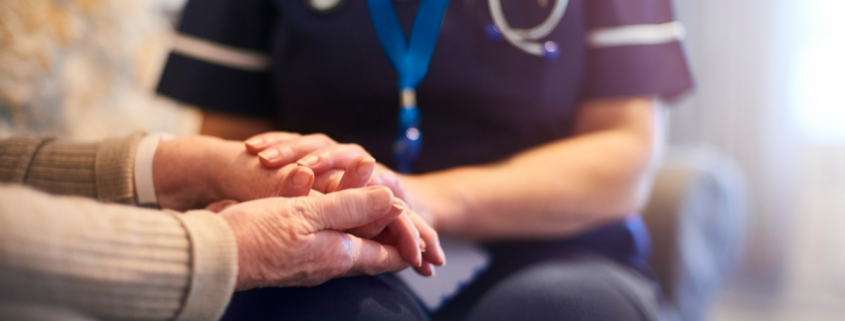5 Recommended Practices of Caring for Stroke Patients at Home
A Stroke is a widespread phenomenon, especially among people over the age of fifty, that is still not discussed much in the public arena. That’s why today we go over what stroke aftercare is and outline the 5 most important principles of caring for stroke patients in the comfort of their own home, so our readers can be sure they are getting the best care for themselves and their loved ones. In this article, you will find out what a stroke is, how to care for stroke patients at home and what not to do. Without further ado, let’s get started!
What is a stroke?
A stroke is a life-threatening condition in which part of the brain becomes deranged as a result of the stoppage of blood supply to its tissues. It is a set of clinical symptoms that are associated with the sudden onset of damage to parts of the brain caused by the stoppage of blood supply to the brain tissue. There are two types of stroke – cerebral ischaemic stroke and cerebral haemorrhagic stroke. Ischaemic stroke occurs when there is an obstruction of an artery supplying the brain with blood. As a result, blood cannot flow through it or does not flow in sufficient quantity for the cells within the brain to receive an adequate amount. During a haemorrhagic stroke, the wall of the cerebral artery ruptures, and blood spills out of the vessel.
What is home care for stroke patients?
Stroke care requires a collaborative effort of stroke patients, their families and the professional medical staff that make up the stroke team. Its effects depend to a large extent on the widespread cooperation and continuous exchange of information between members of the treatment team. It is also vital that the care team has adequate knowledge of the disease and how to deal with a stroke patient at home to properly assess the patient’s condition and plan and implement care. The responsibilities of the live-in carer involved in stroke patient care include participation in life-saving management, prevention of stroke complications, participation in rehabilitation and psychotherapy, and education of the patient in self-care, self-management and a health-oriented lifestyle, as well as assistance with daily household and hygiene duties.
5 recommended practices for caring for stroke patients at home.
Here are 5 principles, practices and recommendations for stroke aftercare at home that will improve your and your loved ones’ quality of life and care:
Ensure medication monitoring
The first point in the principles of how to deal with a stroke patient at home is to monitor the numerous medications that stroke survivors take. Every elderly carer needs to ensure that the stroke patient you are caring for is taking all the medications on time and monitoring for side effects that may require medical attention. In addition, specialists recommend keeping a recovery diary so that you can evaluate the effects of medication and therapy for faster healing.
Ensure regular rehabilitation
Regular exercise can be a remedy for post-stroke symptoms. Many stroke patients face movement impairments that require attention when a stroke patient returns home, so if you want to help your loved one or mentee recover, encourage daily rehabilitation exercises to help improve brain and body function.
Ensure that a comfortable space is prepared at home
Before transferring a stroke patient from the hospital to home, it is important to prepare the accommodation well, particularly the room in which the patient will continue their recovery. The furnishings in the home should be rethought and changed to facilitate care and daily activities. The patient’s room should be well lit and the temperature set at around 20 degrees. If possible, it is also advisable to equip oneself with a hospital-type bed with a height of about 63-65 cm, wheels, a raised headrest and handrails.
If the patient spends the whole day lying down, it is important to ensure that their head is in a comfortable resting position so, as not to put even more strain on the body.
Ensure stroke patient activation and return to society
Symptoms of stroke can include paresis, hypersensitivity palsy, and aphasia — all difficult and often distressing conditions that make it difficult for the stroke patient to return to society and live a normal life. Therefore, motivating the patient to return to community life and giving them the confidence to overcome their disability is a highly important part of after-stroke care. If possible, the patient should go out and enjoy life similarly to their pre-stroke lifestyle, and should also be taken care of by the elderly carer.
Ensure an ongoing education
Education about the ailment that has affected them and how it may affect them in the long term is arguably the most important foundation of good quality stroke aftercare at home. Understanding the condition, needs and requirements for a speedy recovery should be a key part of your work as an elderly carer. Nowadays, those providing after-stroke care have access to countless articles and studies on stroke, so failing to educate is an unforgivable mistake.
After stroke care at home – summary
After heart disease and cancer, stroke is the third most common cause of death in developed countries. It is also the most common cause of permanent disability. The onset of signs of stroke is usually unexpected for both the patient and their family. A stroke patient at home forces major changes in the organisation of family life. Those caring for a stroke patient must have adequate knowledge of the disease and treatment options, so be sure to ensure that you or a loved one receives professional live-in care.














